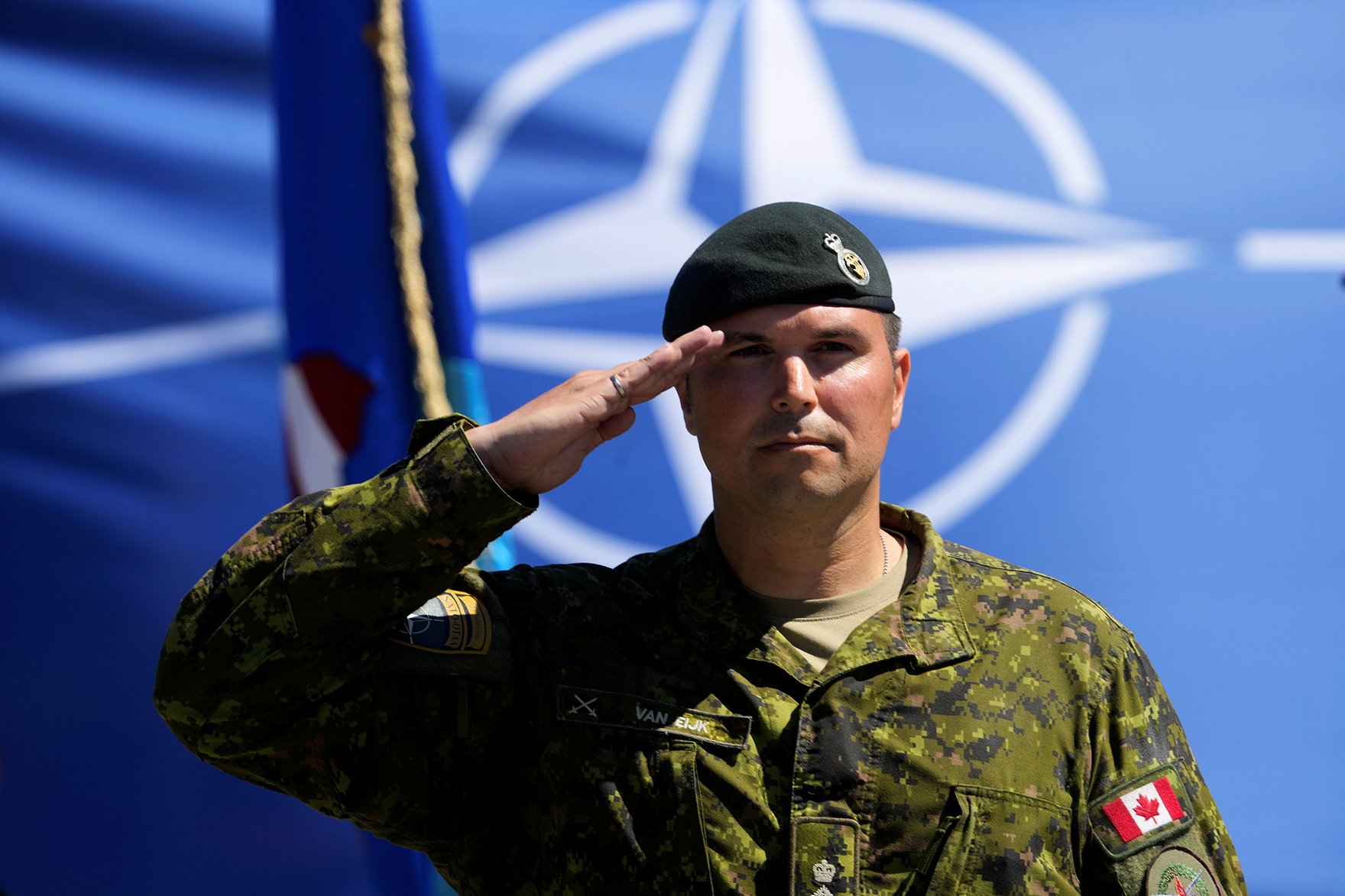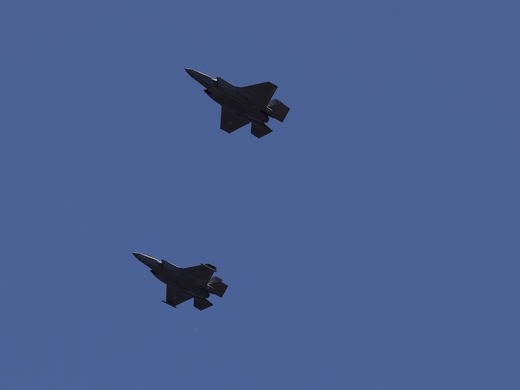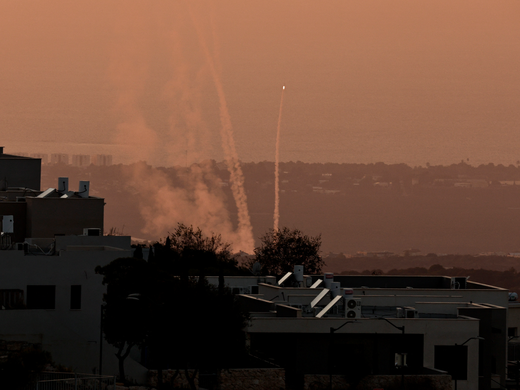The question of defence spending has long been politically fraught in Canada. Military outlays hit a low of slightly under one percent of GDP in the 2010s, rising to 1.33 percent by the early 2020s — far below the target defined by the North Atlantic Treaty Organization (NATO) of two percent of GDP. Even President Barack Obama — who shared an otherwise positive relationship with Canada — admonished Ottawa about the need for greater investment in collective security when he addressed Parliament in 2016. Yet, before and since, there has never been sufficient public pressure or political will to push spending anywhere close to the two percent mark. Other priorities, such as health care, infrastructure and social programs, have taken precedence.
However, in February 2025, US President Donald Trump cited inadequate Canadian defence spending, along with an alleged trade imbalance and concerns about border security, to justify blanket tariffs on Canadian goods. That has, de facto, connected the issue of defence spending to tariffs. The minister of national defence, Bill Blair, has since made clear that Canada is in a hurry to surge defence spending to meet the NATO target.
But the question remains: How?
Tailwinds
The most significant factor propelling new spending would be bipartisan and broad public support. As recently as July 2024, Blair set a target date of 2032 for achieving two percent. In January 2025, that target date had moved up to 2027, Blair declaring the date “absolutely achievable.” Liberal leadership candidates in that party’s recent contest were broadly agreed on the need for faster, and more, defence spending, and Pierre Poilievre’s Conservative Party of Canada is also committed to hitting the target. So, there is political alignment.
A majority of Canadians are also supportive of increasing defence spending. In March 2024, a series of opinion polls showed between 53 and 66 percent of Canadians supported the idea of increasing defence spending. Almost a year later, in February 2025, a poll showed that 54 percent of Canadians supported increased defence spending. The sustained support of a majority of Canadians over a 12-month period shows continuing public support for the idea. This support has likely increased in the run-up to the 2025 federal election, with one poll showing as much as 69 percent of the voting public in favour of increasing defence spending to at least two percent of GDP. That is a significant increase over the past 12 months. The combination of political will and public support is notable, something Blair noted at the annual Conference of Defence Associations (CDA) Institute in March 2025.
There is no shortage of items on which money could be spent. Both the 2017 defence policy, Strong, Secure, Engaged, and the 2024 update, Our North, Strong and Free, include long lists of procurement projects. The 2017 policy outlines 111 initiatives, some of which have not yet been delivered. The 2024 update contains its own list of priorities, itemized by year in Annex A. The Office of the Parliamentary Budget Officer (PBO) has reported that, were Canada to move forward on all the programs outlined in last year’s policy, defence spending would reach 1.76 percent of GDP by 2029–2030, with a total of $81.9 billion in spending. An additional plan, as yet uncosted, to buy new patrol submarines would almost certainly bring Canada to two percent. The PBO raised concerns about the lack of details regarding implementation, as well as about unclear GDP projections. The ambiguity on costing programs such as the patrol submarine presents some uncertainty in reaching two percent, though there is a clear list of procurement projects in the 2024 policy to execute — all of which have been costed and validated by the PBO. It is not a complete plan of implementation, but it is a more detailed vision than ever before.
There is no shortage of items on which money could be spent. Both the 2017 defence policy, Strong, Secure, Engaged, and the 2024 update, Our North, Strong and Free, include long lists of procurement projects.
As a final positive sign, defence procurement of late appears to be undergoing small shifts toward greater efficiency. Minister Blair and the then minister of Public Services and Procurement Canada (PSPC), Jean-Yves Duclos, have talked about “strategic partnerships” with Canadian companies to support national security, deliver jobs and support economic growth. “Strategic partnership” appears to mean selecting Canadian companies who can deliver quickly after a contract is awarded. In his remarks at the 2025 CDA Institute conference, Blair acknowledged that defence policy is also industrial policy, in that Canada’s defence industry delivers many of the military’s capabilities. Canada’s defence industrial base produces warships, armoured fighting vehicles, munitions, helicopters, small arms, and services and solutions such as cybersecurity and simulation-based training, as outlined in the Key Industrial Capabilities framework. This framework may be revised and updated as part of the consultations that have recently begun on a new defence industrial strategy announced by Minister Blair.
Headwinds
There are reasons for hope that Canada can reach the defence spending target of two percent of GDP. However, there are also obstacles to realizing that goal.
The most obvious problem may be the notoriously slow and bureaucratic process by which Canada acquires defence systems. To put this in perspective, the National Shipbuilding Procurement Strategy was first unveiled by the Stephen Harper government in June 2010, and has delivered the Arctic offshore patrol vessels and joint supply ships, and will soon begin delivering River-class destroyers. Almost 15 years later, the strategy has not fully delivered on its objectives. The F-35 purchase was initially proposed by that same government in the summer of 2010, and the future status of Canadian F-35s remains somewhat unclear as a result of recent Canada-US trade and security tensions.
A June 2024 House of Commons Standing Committee on National Defence (NDDN) report itemized many well-known issues with procurement: byzantine processes; inadequate transparency; risk aversion that contributes to procedural gridlocks; and a shortage of procurement personnel. All that manifests in confusion, cost over-runs and delays. Despite the recent promise of strategic partnerships, it is not clear how widely this approach will be applied. The NDDN report itemizes many challenges with the existing structure. Minister Blair acknowledged those challenges in his remarks at the March 2025 CDA Institute conference.
Procurement functions are separated between at least two departments — the Department of National Defence (DND) to define the requirements, and the PSPC to execute the procurement. Innovation, Science and Economic Development Canada is the third department involved, if there are industrial technical benefits assigned for the Canadian industrial benefits component. Alan Williams, a former assistant deputy minister of matériel at DND, advocates for Canada to adopt a model similar to that used by the United States and Australia, which is to make one organization responsible. Williams cautions that putting authority for procurement under one organization will not solve all the problems, but says it is a necessary first step.
A June 2024 House of Commons Standing Committee on National Defence report itemized many well-known issues with procurement: byzantine processes; inadequate transparency; risk aversion that contributes to procedural gridlocks; and a shortage of procurement personnel.
Even if defence procurement was made the responsibility of a single organization, it is not clear this change would resolve issues with actually spending the money that is allocated for defence. Even if money is allocated, the full amount often cannot be spent, resulting in “lapsed spending.” For instance, in February 2024, the PBO reported that during the first six years’ execution of the planned capital spending laid out in the 2017 defence policy, Strong, Secure, Engaged (from fiscal 2017–2018 to 2022–2023), DND failed to spend approximately $12 billion that had been allocated. In 2022–2023 alone, DND left $1.57 billion of allocated spending unspent, with about $1.1 billion of this lapsed spending earmarked for capital equipment and infrastructure funding.
The problem is partially attributed to a disconnect between the departments that allocate the funding (Treasury and Finance) and those that spend the money (the DND and the PSPC). This division has endured, according to some, because there is no single department that can drive change. Dysfunctional as defence procurement can be, no single department involved — DND, PSPC, Treasury Board, Department of Finance, Privy Council Office — either has all the statutory authorities to make improvements or is incentivized to pursue reforms that include the mandates of other departments. Defence procurement is thus a “problem without a champion,” because no single department is empowered to lead a solution.
Making the Most of Two Percent
Then, there’s the problem of recruitment. In April 2024, the Canadian Armed Forces (CAF) reported a force-wide personnel shortage of 16,500 members. The shortage was partially attributed to limits on training capacity. More recent reports indicate that recruitment has surged significantly in late 2024 and early 2025, though it is not clear to military leaders if this is the result of a surge in patriotism as a result of the election of Donald Trump, changing labour market forces, or something else entirely. What is clear is that more Canadians are seeking to join the military.
Personnel shortages will impact parts of the CAF differently, depending on which occupational specializations have the greatest shortages. A shortage in marine technicians, for example, could have major impacts on the future of the Royal Canadian Navy, while having no effect on army readiness. Marine technicians are the people who maintain and repair the vital systems that allow warships to float, move and fight. With as many as 12 new patrol submarines and 15 new destroyers, there will be a need for more personnel to sustain maintenance and operations. New personnel can be trained to a basic level in a matter of months, but training people to be fully deployable takes longer. It takes longer still to acquire trained, experienced non-commissioned officers, who are needed to supervise new personnel, or the officers to lead them. Generating new junior personnel is faster; nonetheless, building a lasting capability takes years, as it involves developing personnel at all rank levels. Making matters more complicated, the CAF also intends to procure capabilities that Canada does not currently possess (airborne early-warning aircraft, long-range missile capabilities, ground-based air defence systems, and so forth). Training personnel for new capabilities is a lengthier process — at scale — than training personnel for existing capabilities.
A CAF personnel shortage will not directly impact Canada’s ability to conduct defence procurements. Personnel shortages may, however, impact on the readiness of the CAF to use all the new capabilities if personnel surges do not keep pace with budget surges. The two percent target is a measure of input only — how much money we spend. Operational effectiveness, however, is a measure of outputs: What can the CAF do? How many things can it do simultaneously? How well? For how long? With suggestions that it may take until the early 2030s to generate those personnel, Minister Blair has acknowledged the need to surge training capacity for that purpose. Sustaining a surge of new personnel requires sustaining the interest of Canadians who might wish to join the military, and sustaining budgetary allocation and capacity for training.
Summary
The current commitments to surge defence spending are encouraging. Canadian elected leaders and Canadians alike are supportive of the overall intention. Three basic challenges remain: First, sustaining public support over the long term for the necessary spending. Second, managing the complexity of execution that is inherent in defence procurements. Third, implementing new defence industrial policy, while delivering on identified programs.
Sustaining public sentiment is unknowable from today’s perspective. Canadians’ preferences are hard to predict over the long term, and times of uncertainty make that harder still. It is incumbent on the Government of Canada to continue reminding Canadians of the importance of defence spending for our national defence and our national prosperity to capitalize on the current levels of public support.
The limitations of the procurement system are well known. If Canada continues to lapse defence spending going forward, Canada could fall short of reaching its NATO commitment to contribute two percent of GDP, whether that target is 2027 or 2030. In practice, a solution may include both making changes to the existing procurement enterprise (more procurement personnel, removing bottlenecks, and so forth) and increasing “strategic partnerships” with companies that have a strong record of rapid delivery.
Lastly, Canada is embarking on developing a new defence industrial policy, the specifics of which remain to be seen. It seems reasonable to assume that a new policy will prioritize speed to meet the needs of the moment. The new policy will be implemented while existing mechanisms are relied on to deliver at least some of the identified defence acquisitions. Depending on the degree of change proposed, relying on a mix of existing, cumbersome processes and new, untested approaches could introduce more complexity.
There are many factors intertwined with defence spending, not least of which is Canada’s relationship with the United States. In a time of heightened global tensions, Canada’s credibility and reliability in the eyes of its other NATO allies is also important. We are currently seeing unprecedented enthusiasm for defence spending. Time will tell if this can be sustained and enable Canada to deliver on its two percent ambition.



